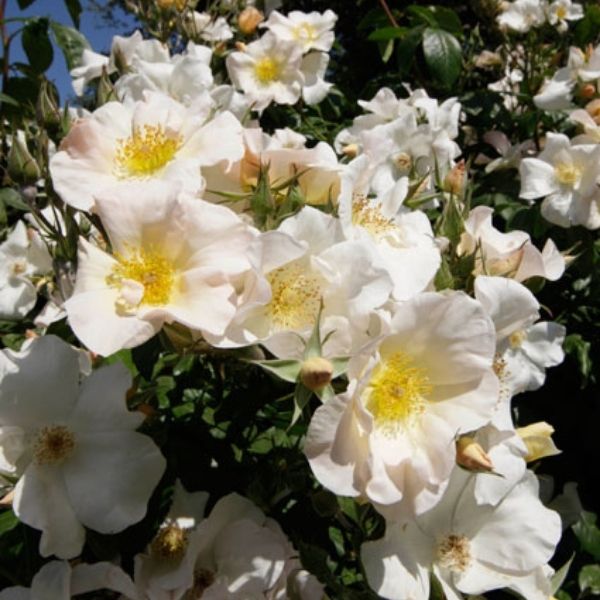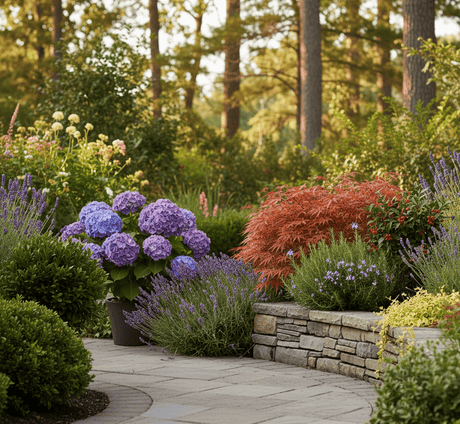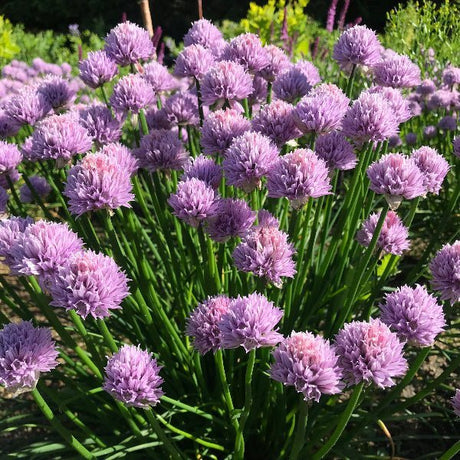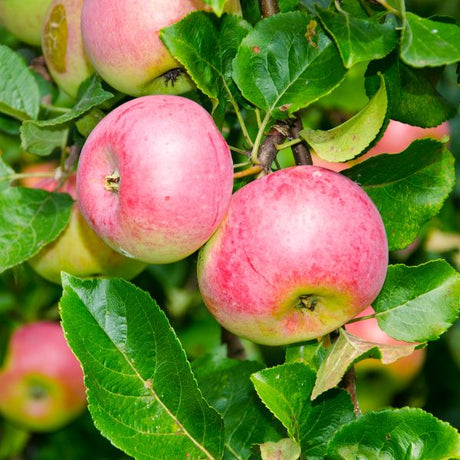Sally Holmes Climbing Rose
Rosa 'Sally Holmes'
Plant Sentry™
Plant Sentry™

Plant Sentry™ Protected
Your order is protected by our compliance system that:
- Prevents restricted plants from shipping to your state
- Ensures plants meet your state's agricultural requirements
- Protects gardens from invasive pests and diseases
Delivery and Shipping
Delivery and Shipping
Delivery and Shipping
Fast, Safe Plant Delivery
Ships in 3-4 business days • Tracking provided • Weather protected
| Under $50 | $9.99 |
| $50 - $99.99 | $14.99 |
| $100 - $149.99 | $16.99 |
| $150 - $198.99 | $24.99 |
| $199+ | FREE |
✓ Zone-specific timing • ✓ Professional packaging • ✓ Health guarantee
Understanding Plant Options
Nature Hills offers plants in two main formats:
- Container Plants: Grown in pots with soil, sized by container volume and plant age
- Bare Root Plants: Dormant plants without soil, sized by height measurements
Container Plant Sizes
Container sizes indicate plant age and growing capacity rather than liquid volume equivalents. Our containers follow industry-standard nursery "trade gallon" specifications, which differ from standard liquid gallon measurements.
Young Plants (6 months to 18 months old)
| Container Size | Actual Volume | Metric Equivalent |
|---|---|---|
| 2" x 2" x 3" | 0.18 - 0.21 dry quarts | 0.20 - 0.23 dry liters |
| 4" Container | 0.31 - 0.87 dry quarts | 0.35 - 0.96 dry liters |
| 4.5" Container | 0.65 dry quarts | 0.72 dry liters |
| 6" Container | 1.4 dry quarts | 1.59 dry liters |
| 1 Quart | 1 dry quart | 1.1 dry liters |
| 5.5" Container | 1.89 dry quarts | 2.08 dry liters |
Established Plants (18 months to 2.5 years old)
| Container Size | Actual Volume | Metric Equivalent |
|---|---|---|
| 2 Quart | 2 dry quarts | 2.2 dry liters |
| #1 Container | 2.26 - 3.73 dry quarts | 2.49 - 4.11 dry liters |
| 5" x 5" x 12" | 3.5 - 4.3 dry quarts | 3.85 - 4.74 dry liters |
Mature Plants (2-4 years old)
| Container Size | Actual Volume | Metric Equivalent |
|---|---|---|
| #2 Container | 1.19 - 1.76 dry gallons | 5.24 - 7.75 dry liters |
| #3 Container | 2.15 - 2.76 dry gallons | 8.14 - 12.16 dry liters |
Large Plants (3-5 years old)
| Container Size | Actual Volume | Metric Equivalent |
|---|---|---|
| #5 Container | 2.92 - 4.62 dry gallons | 12.86 - 20.35 dry liters |
| #6 Container | 5.25 - 6.01 dry gallons | 23.12 - 26.42 dry liters |
| #7 Container | 5.98 - 6.53 dry gallons | 26.34 - 28.76 dry liters |
Bare Root Plants
Bare root plants are sold by height from the root system to the top of the plant. Plants may exceed minimum height requirements.
Common Sizes:
- Trees: 1 foot, 2 feet, 3 feet, 4 feet, 5 feet, 6 feet
- Shrubs & Perennials: 1 foot, 18 inches, 2 feet
Important Notes
Container Volume Specifications
- Trade Gallon Standard: Our containers follow industry-standard "trade gallon" specifications established by the American National Standards Institute (ANSI Z60.1) for nursery stock
- Volume Variations: Actual soil volume may vary due to plant root systems and growing medium settlement
- Age Indicators: Container size primarily indicates plant age and maturity rather than liquid volume equivalents
Growing Conditions
- Plant size can vary based on variety and growing conditions
- Container size helps indicate plant maturity and establishment level
- Larger containers generally mean more established root systems and faster landscape establishment
Seasonal Availability
- Bare root plants are available seasonally when dormant
- Container plants are available throughout the growing season
- Specific varieties may have limited availability in certain sizes
Questions?
For questions about specific plant sizes or availability, please contact our plant experts who can help you choose the right size for your landscape needs.

Plant Sentry™ Protected
Your order is protected by our compliance system that:
- Prevents restricted plants from shipping to your state
- Ensures plants meet your state's agricultural requirements
- Protects gardens from invasive pests and diseases
Plant Profile & Growing Essentials
Cold hardy, Disease resistant, Reblooming, Flowering, and Attracts pollinators
Specifications
Specifications
-
Botanical Name
-
Height
-
Width
-
Growing Zones
-
Sunlight
-
Growth RateFast
-
Flower Color
-
Leaf Color
-
Pollinator FriendlyYes
-
Bloom PeriodLate Spring, Early Summer, Late Summer, Early Fall, Late Fall
-
FragrantYes
Planting & Care Instructions
Planting & Care Instructions
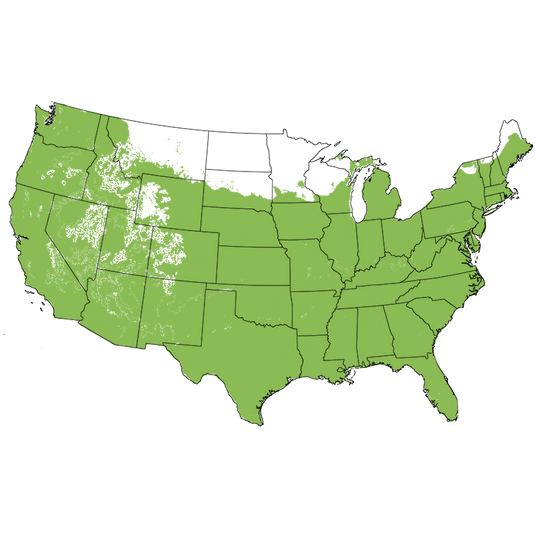
Growing Zones 5-10
Fancy an English-style garden dripping with creamy white Roses all summer long? Then don't miss out on our limited inventory of the beloved Sally Holmes Climbing Rose (Rosa 'Sally Holmes')! The study stems are full of lush green foliage that by late spring and early summer fills itself with tender pink buds that burst open into clusters of flat single white blooms with a golden crown in the center of each.
Sally Holmes is a large, high-performance but short Climbing Rose that grows 6 to 12 feet in height and is only 3-5 feet wide. Simply put, Sally Homes Rose blooms her head off! She produces outstanding trusses packed with plenty of pink-hued buds that open to reveal ivory petals around a burst of cheerful yellow stamens. Bedecking your garden with her lightly scented, single blooms and does so much more than acting as a mere ornamental vertical Rose.
You'll gain a versatile landscape specimen, armloads of cheerful blooms, and even double-duty garden additions for shade, privacy, and height! Plus, all the local butterflies will truly appreciate your thoughtfulness in providing these extended blooming nectar resources for their nutrition, too. You'll get beauty, charm, and a good deed all in one pretty package!
Planting and Application:
Even in very small spaces, Sally Holmes works beautifully to provide a privacy screen and garden feature. Train her up on a trellis and she'll reward you as a "flowering wallpaper" for a garden room. Even balcony and patio gardeners can add this space-saving vertical garden element to large planters and train them onto a trellis to create living walls that shade and screen your private areas. As always, train Climbing Roses onto arbors and garden pergolas!
Sally Holmes can also be used to add year-round visual interest on a Rose pillar or obelisk. These time-tested solutions bring structure to your garden, even in wintertime! Feel free to mix and match this pretty, multi-hued choice with any of our other Climbing Roses. Alternate with pink, yellow, or even striped selections for a customized look you'll adore each season!
What's more, versatile Sally Holmes can also be enjoyed as a vigorous Shrub Rose accent! They create a mounding and tumbling shrub that doubles as thorny defensive barriers and landscape definition. Plant several along a slope and you'll create a lovely and effective barrier planting to protect (and enhance!) your property. Use a single truss as an elegant cut flower arrangement on its own! You'll have plenty to choose from, and harvesting the blooms actually encourages more flower production!
- Pink Buds, Single Creamy White Blooms & Golden Centers
- Lush Foliage & Strong, Flexible Canes
- Mid-Range Height & Space-Saving Width
- Very Versatile & Adaptable
- Cut Flowers & Pollinators
- Screening, Backdrops & Barriers, Containers & Vertical Specimens
#ProPlantTips for Care:
Delightfully hardy and adaptable throughout USDA growing zones 5 to 10, these versatile Climbing Roses do fantastically in almost any full sun setting! Give them good air circulation and enriched, well-drained moist soil with supplemental moisture during the hot summer months. Roses appreciate a 3-4 inch thick layer of arborist mulch over their entire root system and regular fertilizer applications.
How to Prune and Train Climbing Roses
Pruning should not be done during the first two to three years, since Climbing Roses need time to build flowering Rose canes. These structural canes will grow thicker for several years before it is time to replace them.
Spring Pruning and Structural Rejuvenation
Remember that spring pruning is most limited to removing broken branches, and dead tips or correcting the structure of the Climbing Roses. If you remove long canes and side branching you will be removing the first set of June flowers.
- Prune Roses in early spring just as you see new buds beginning to swell.
- Remove any dead, diseased, or damaged branches.
- Identify several new, younger, more vigorous canes to become the new structural foundation of your beautiful Climbing Rose.
- Remove the fattest, oldest canes out at the soil level, if possible and right after the first set of flowers finishes. Those canes will be replaced with new shoots that develop from the base. As these new, rapidly produced shoots elongate, you will want to direct, train, and tie them into the place you would like them to develop.
Summer Maintenance and Pruning
Horizontal branches produce the most flowers. Prune these secondary canes after flowering, because Climbing Roses bloom on last year's canes (old wood).
- Cut your secondary canes down to 6 - 8 inches above a bud after the first flush of flowers has finished.
- Trim the secondary canes back at 90 to 45-degree angles.
- Keep your structural support canes in place.
In colder regions it may be more difficult to maintain Climbing Roses, so choosing your planting site is important.
Winter protection is best for Roses grown in zones 7 and colder. Mulch is your best, more natural way to overwinter roses by mounding the dormant canes in late fall. Don't fall prune, rather instead wait until spring.
Early each spring, after the last frost of the year has passed, it's always a good idea to prune back the Rose tree several inches to maintain the nice round form atop its trunk. Keep new blooms returning with occasional deadheading, quickly improving your overall display.
Prune away suckers and branching that forms at the base or on the trunk each year too. Pruning Roses allows for better, bushier growth each year and stimulates new growth. Learn about winterizing, and un-wintering your Roses in our Garden Blog, plus all the tips and tricks you need when pruning your new prize Rose bush!
- Full Sun
- Moist Enriched Well-Drained Soil
- Regular Fertility & Watering
- Prune Early Spring
- Mulch Very Well
Bred by Robert Holmes in Great Britain in 1976, and named in honor of his wife, Sally Holmes Climbing Rose will bring as much joy as we can imagine Sally did for her doting husband! Order this vigorous vertical bloomer for your landscape today from the experts at NatureHills.com!

